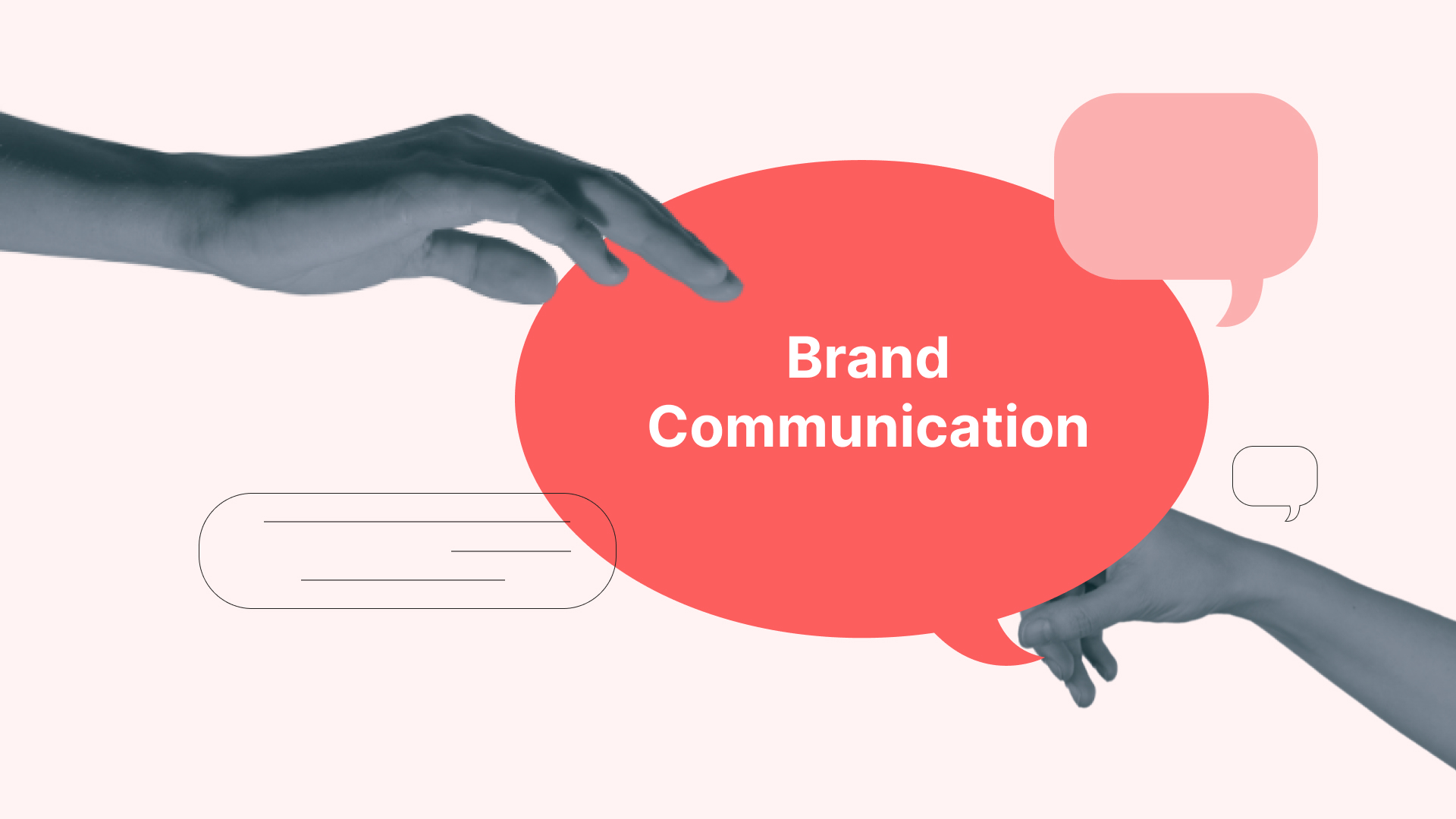How Brand Management Builds Stronger Healthcare Brands
Healthcare organisations struggle with generic branding. Insight-led brand management creates differentiation, trust, investment, and growth. Learn how.
.jpg)
Healthcare organisations struggle with generic branding. Insight-led brand management creates differentiation, trust, investment, and growth. Learn how.
.jpg)

The executive team gathered around the conference table to review the rebrand presentation.
New logo: clean, modern, trustworthy.
Tagline: "Excellence in Every Moment."
Brand pillars: Innovation, Compassion, Community.
The CMO smiled. The CEO nodded. Six months and a half a million dollars later, they launched.
Three weeks after launch, a staff member posted in Slack: “Our brand says ‘excellence in every moment,’ yet we’re still using a 2008 records system. I’ve also worked my fourth double shift this month.”
The message got 47 emoji reactions before HR asked them to delete it.
This is where healthcare brand management often falls short.
Not because the logo wasn't pretty enough. Not because the tagline wasn't inspiring enough. But because the brand was created in a conference room, disconnected from the truth of what actually happens in the hallways, examination rooms, research labs, sales calls, and clinical trials where your brand really lives.
In this blog, we’ll look at how to bridge that gap and share practical ways to create a brand that resonates with patients, clinicians, and stakeholders alike.
Here’s a Quick Overview before we start:
Before we explore the details deeper, here’s what healthcare brand management really means, and why the real-world experience of your brand matters more than any logo or tagline.
Most definitions will tell you that healthcare brand management is the strategic process of developing and maintaining a healthcare organisation's reputation across all touchpoints: visual identity, messaging, stakeholder experience, internal alignment, and competitive positioning.
That's not wrong. But it misses a critical insight.
Healthcare brand management isn't about shaping perceptions from scratch. It's about discovering what's already true about your organisation and making it coherent enough that everyone – from your board to your field sales team, and from clinicians to customer service – can recognise it and live it.
You can't sustain a brand built on fiction, especially when investors, partners, and regulators eventually see through it.
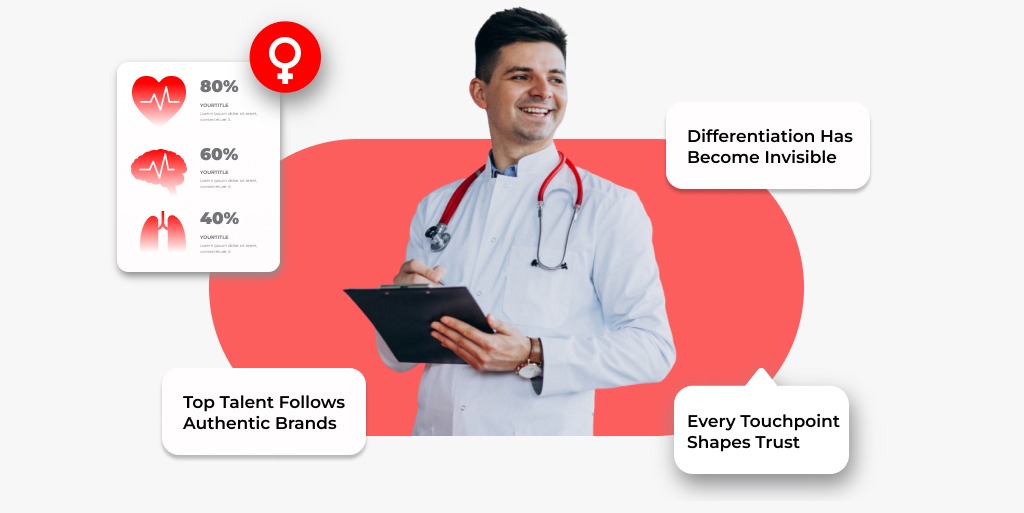
Absolutely. Why?
Because the healthcare trust is collapsing.
A survey of ~450,000 U.S. adults showed that trust in physicians and hospitals (“a lot of trust”) dropped from over 70% in April 2020 to under 50% by January 2024.
Decision-making has become exponentially more complex. Patients research treatments across Reddit and medical journals. Investors scrutinise pipeline portfolios. Payers demand evidence before coverage. And here's what makes this challenging:
Your brand isn't just your website. It's the aggregate of every clinical trial result, physician testimonial, patient review, investor call, and regulatory filing.
A mental health platform might have beautiful branding, but if therapists complain online about administrative burdens, that becomes your brand. A medical device company might highlight innovation, but if surgeons are sharing failure videos in private WhatsApp groups, that’s your brand as well.
Healthcare markets are drowning in sameness. Fifty digital health platforms claim "personalised care." Twenty pharmaceutical companies promise "patient-centricity." Dozens of medical device manufacturers say "clinical innovation."
Real decisions are made with specifics: Which mental health app has clinicians responding within hours? Which drug manufacturer supports prescribers with real-time medical affairs access, not scripted sales calls?
What matters is how you can articulate it clearly enough to highlight your brand.
Physicians choose where to practice based on culture. Researchers select employers based on scientific freedom and resources. Sales professionals evaluate product credibility and leadership integrity.
When your brand promises "we're changing healthcare" but clinical teams burn out from unrealistic timelines, the disconnect doesn't just hurt recruitment—it creates distrust that leaks into every external interaction.
Here's what nobody talks about: When a CEO promotes a brand that doesn’t reflect reality, the negative effects simply grow.
Internal confusion spreads. Commercial teams don't know which story to tell. Marketing says one thing, clinical operations does another, investor relations presents something else entirely.
Every department creates its own narrative, resulting in 15 different "brands" that confuse stakeholders and dilute impact. Staff may find themselves repeating promises they know won’t be kept, breeding frustration that stakeholders are quick to pick up on.
When marketing sets expectations that the experience doesn’t meet, trust is lost. This happens across a patient’s treatment journey, a physician’s prescribing support, or an investor’s due diligence process.
Instead of chasing trends or reinventing themselves every few years, the most successful organisations do this: they discover and amplify the brand they already have, grounded in truth, not aspiration.
After partnering with multiple healthcare organisations, including ventures backed by leading institutional investors, we've identified five elements that consistently drive measurable brand results:
Effective brands are discovered through systematic inquiry.
What drives results: Brands built on authentic organisational strengths that stakeholders can verify through experience.
Conduct 40-60 interviews across every level of an organisation. Ask open-ended questions:
Pro Tip: You can drop a questionnaire form so that these answers can be anonymous from different departments.
Scientific integrity over sales convenience becomes central to the brands. Not because it was aspirational, but because it was true and differentiating in an industry notorious for spin.
Why it works: When your brand promise matches operational reality, every stakeholder interaction reinforces your positioning rather than contradicting it. Patients or prescribers become advocates because their experience validates what you promised.
Measurable impact: Higher stakeholder retention, stronger word-of-mouth referrals, reduced marketing spend required to maintain positioning, and premium pricing power.
Take this example. A mental health platform discovered that its real differentiator wasn't "accessibility" (which everyone claims), but "therapeutic continuity”, having the same therapist for every session. This truth was verifiable, defensible, and resonated deeply with patients frustrated by fragmented care elsewhere. You can use such phrases for your taglines to reflect reality.
After weeks of listening and observing, synthesise insights across stakeholder groups.
What drives results: Brand strategies that create coherent narratives across patients, providers, payers, investors, and internal teams, without contradicting each other.
Look for:
This is where brand strategy becomes archaeology rather than invention.
Why it works: Healthcare decisions involve multiple stakeholders with different priorities. A pharmaceutical brand that promises "innovation" to investors but "safety and reliability" to prescribers creates confusion. Coherent brands convey a single, consistent message that resonates differently with each audience.
Measurable impact: Faster sales cycles, stronger investor confidence, improved internal alignment, reduced message testing and iteration costs.
For example, a medical device company positioned around ‘surgeon success partnership’ aligned its brand across all stakeholders. Surgeons valued the support, hospital procurement valued the outcomes, sales teams appreciated the authentic differentiation, and investors recognised the defensible competitive moat.
What drives results: Organisations where frontline teams understand, believe in, and actively deliver the brand promise in every stakeholder interaction. This is where healthcare brand management diverges from traditional branding:
Measurable impact: Higher employee engagement scores, lower turnover (especially in customer-facing roles), stronger net promoter scores, and organic brand advocacy from staff.
For example, a biotech company built its brand around “scientific integrity over speed.” Medical affairs teams admitted when they didn’t know the answer and referred questions to experts. Prescribers noticed, and trust improved significantly.
What drives results: Brand strategies informed by observing actual stakeholder behaviours and experiences, not just asking what they say they want.
Brand moments don't happen in conference rooms. They happen when a mental health therapist responds to a patient's crisis at 11 PM. They occur when a sales representative receives a challenging question from a surgeon during a procedure. They happen in the investor Q&A when someone asks the hard question about trial timelines.
Shadow stakeholder journeys. Observe sales calls. Sit in on patient support calls. Watch clinical training sessions. Attend medical conferences. Experience the brand the way your stakeholders actually experience it.
Why it works: What stakeholders say in surveys often differs from what they actually do. Observing real patient journeys, shadowing sales calls, and watching clinical workflows reveal the moments that truly matter—and the disconnects between brand promise and lived reality.
Measurable impact: Reduced brand-reality gaps, fewer failed initiatives, stronger product-market fit, higher ROI on brand investments.
For example, a digital health company's surveys said users wanted "more features." But observing actual usage revealed they couldn't find the features that already existed. The rebrand focused on "intuitive simplicity," driving a 34% increase in feature adoption without building anything new.
What drives results: Brands that evolve strategically while maintaining core positioning, rather than chasing trends or rebranding every few years.
Brand equity compounds over time. Each consistent interaction builds trust. Frequent repositioning signals instability and forces stakeholders to constantly re-evaluate who you are. Strategic consistency allows you to own a position in stakeholders' minds.
Measurable impact: Higher brand recall, stronger association with core attributes, lower customer acquisition costs, improved stakeholder lifetime value.
For example, a pharmaceutical company maintained its "rigorous science" positioning for 8 years while competitors cycled through "innovation," "patient-centricity," and "digital transformation" positionings. Prescribers knew exactly what they stood for—and that clarity drove consistent gains in market share.
Strategic consistency transforms brand promise into measurable impact. Brands that stay true to their positioning build trust, clarity, and market advantage.
Strategic brand identity transformation delivers measurable results. Take these examples that demonstrate what it takes to build a truly impactful healthcare business.
Established the brand strategy centred on "Simplifying mental health for your growth."
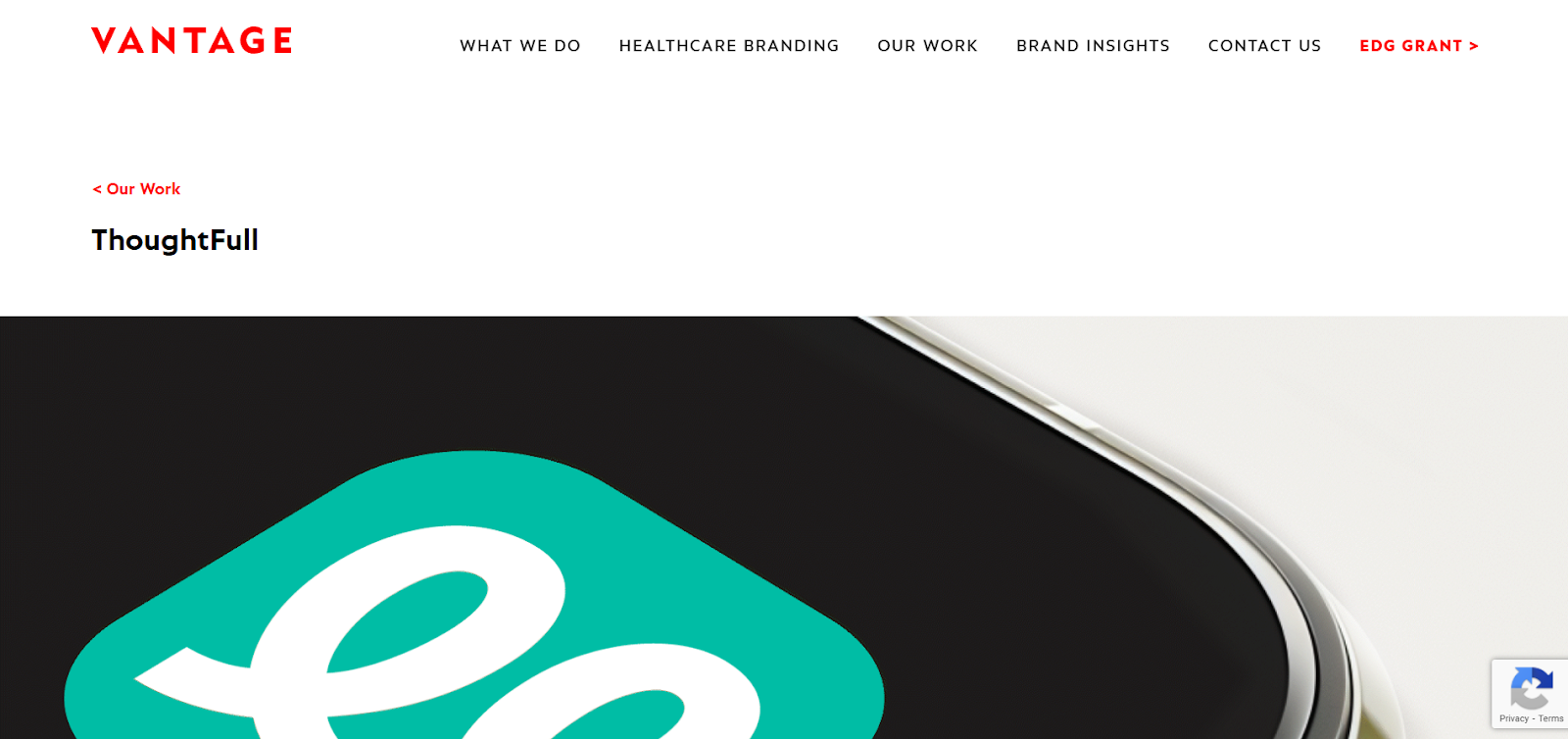
ThoughtFull is a Temasek-backed digital mental health platform operating across Singapore, Malaysia, Hong Kong, and the Philippines.
Through research-led brand development, they articulated a positioning around accessible daily mental wellness, not just crisis intervention, making mental health support feel approachable rather than clinical. The coherent brand identity helped them scale across multiple markets while maintaining investor confidence.
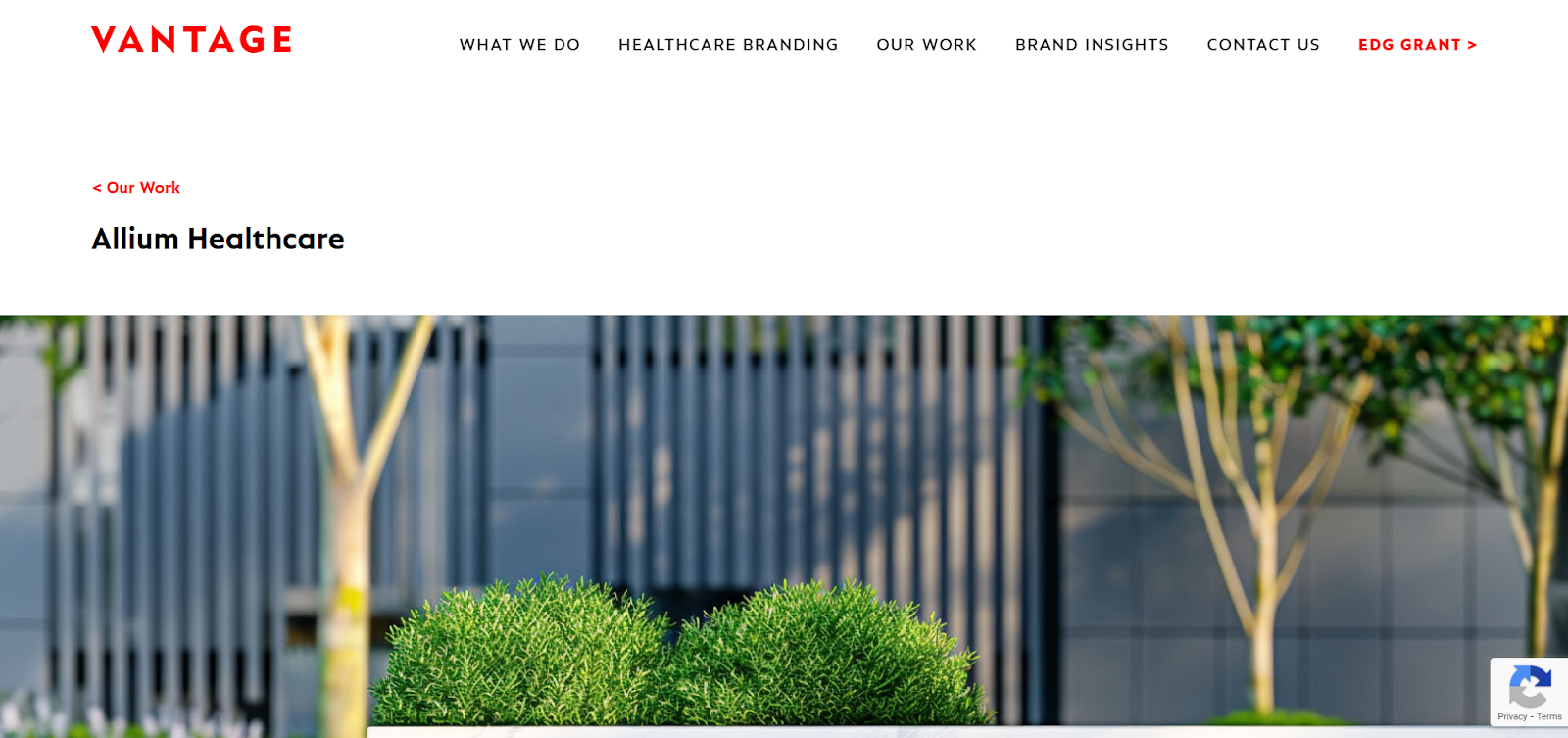
Allium Healthcare offers premium, personalised long-term aged care, setting a new standard in Singapore. Its brand identity, inspired by interconnected Allium flowers, reflects unity and community. Positioned at the high end of the market, the nursing home addresses the growing senior population while delivering exceptional care and well-being.
Read the full story here: Allium HealthCare< >Vantage
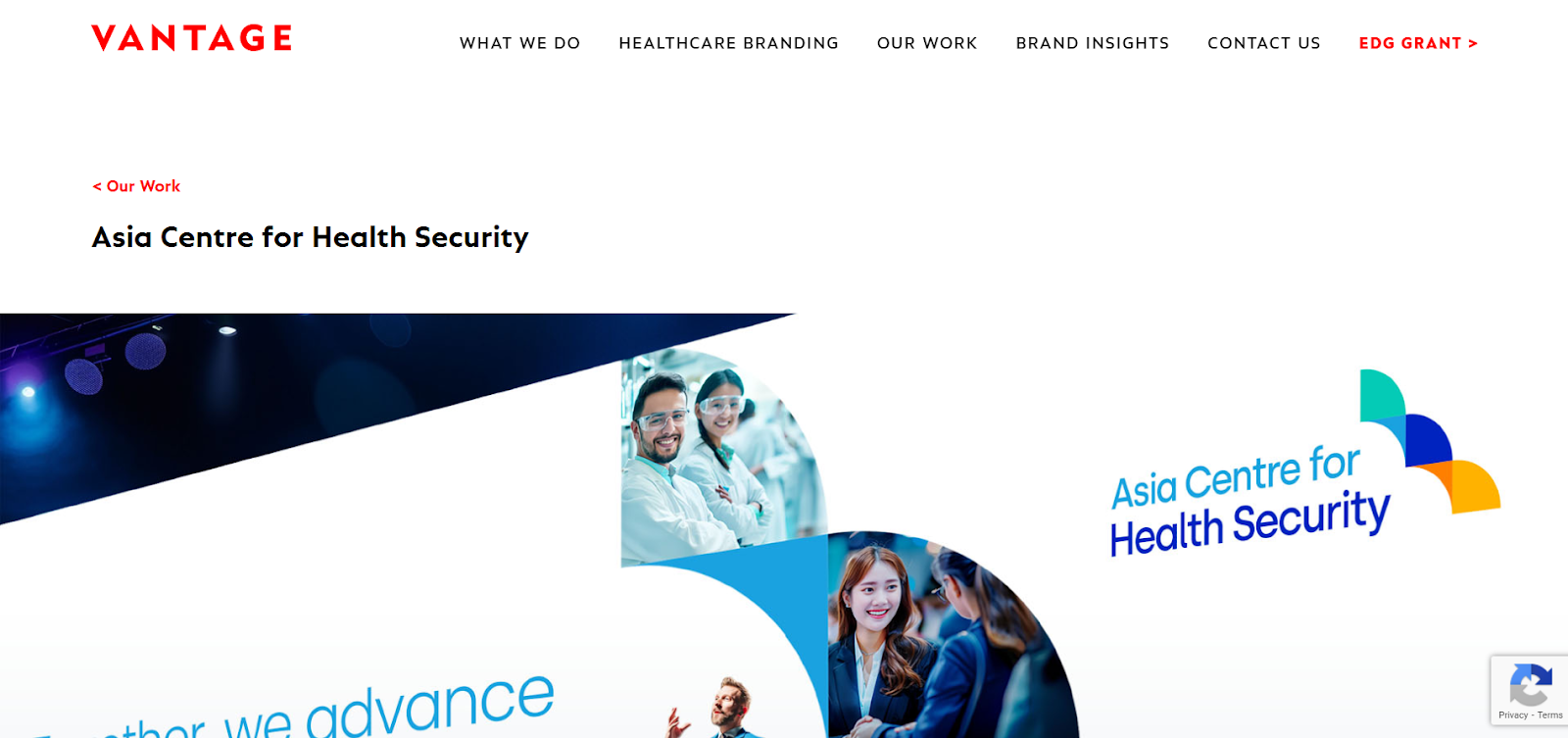
The Asia Centre for Health Security (ACHS), launched in 2024, safeguards Asia from biological threats by collaborating with leading universities. Its new branding positions ACHS as a trusted, Asia-focused authority, highlighting interdisciplinary partnerships. The shield-inspired design reflects expertise and collaboration, earning strong pride and positive reception from faculty and partners.
These examples aren't cosmetic rebrands. They're examples of discovering authentic organisational truths and building brand systems that align internal culture with external perception.
Many organisations stumble by making avoidable mistakes that break trust, dilute differentiation, and slow growth.
The most common healthcare brand management mistake is leading with creative exploration before understanding what the brand should communicate.
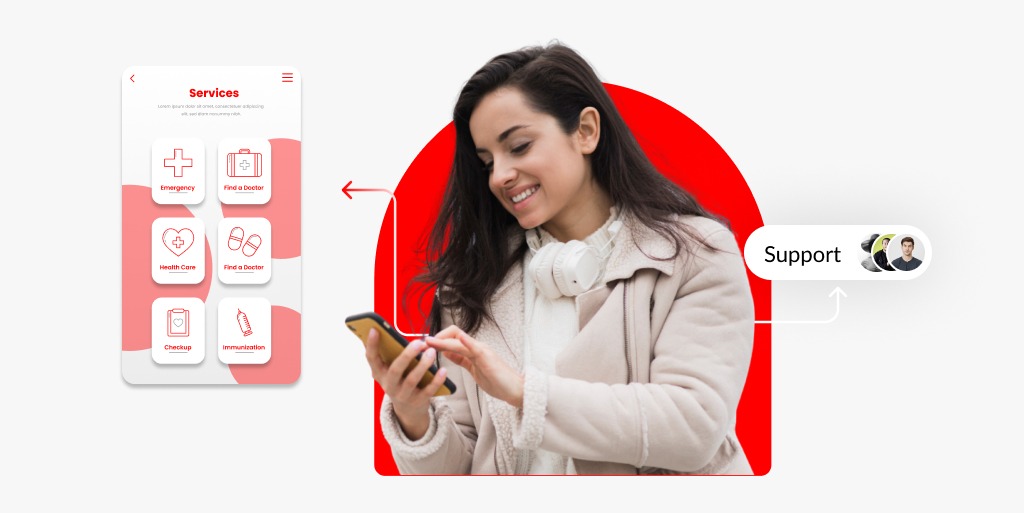
We've seen organisations spend months debating logo concepts without ever clearly defining what the brand stands for. The result is a beautiful design that communicates nothing specific.
Focusing on logos, colours, or taglines before defining what your brand truly stands for leads to beautiful designs that say nothing specific. Strategy comes first. Design should amplify authentic organisational truths, not replace them.
Executives understand strategy, market positioning, and competitive dynamics. What they often don't understand is the lived reality of stakeholder interactions.
Executive perspectives are important, but they don’t capture stakeholder realities. Patients, prescribers, and frontline teams often experience brand gaps that leadership overlooks. Ignoring them creates a disconnect between brand promise and lived reality.
Every healthcare category has leaders that others try to emulate. In pharma, everyone wants to be like the companies with patient-centric reputations. In digital health, everyone mimics the brands with sleek consumer experiences. In medical devices, everyone chases the innovation leaders.
Emulating competitors’ positioning or visuals may seem safe, but it dilutes your unique strengths. Your brand should reflect what you actually do differently, not what you wish you did or what others are doing successfully.
Healthcare organisations frequently approach branding as a discrete project with a defined endpoint:
"We need to rebrand before our Series B."
"We need new positioning before the product launch."
"We need to update our look before the conference."
Branding isn’t a milestone; it’s an ongoing process. Markets shift, competitors move, and organisations evolve. Without continuous alignment, your brand risks misalignment with operational reality, reducing credibility and impact.
Your brand is every interaction a stakeholder has with anyone from your organisation.
Every interaction, whether a medical science liaison answering a prescriber, a therapist with a patient, or a sales rep in the field, shapes perception. Logos and taglines mean little if your teams don’t live the brand.
The right partner can translate these insights into a strategy, ensure internal alignment, and turn your brand into a trusted and differentiated market leader. But what does it take to find the right one?
Not all branding agencies understand healthcare. Many apply consumer brand methodologies to healthcare challenges without recognising the unique complexity: regulatory constraints, clinical evidence requirements, multi-stakeholder decision-making, long sales cycles, and the fundamental gravity of healthcare outcomes.
When evaluating healthcare brand management partners, ask these critical questions:
For healthcare organisations looking to stand out, build trust, and generate organic leads, you can craft insight-led, high-impact brand transformations that turn your reputation into your most powerful asset. With proven experience, Vantage works across every stakeholder touchpoint to ensure your brand is coherent, trusted, and delivers measurable business impact.
Whether you're preparing for funding, scaling across markets, or repositioning in a competitive landscape, let's explore what makes your organisation genuinely different. Book a Demo with us here!
1. How long does healthcare brand development typically take?
Strategic healthcare brand development typically takes 3-6 months, comprising 6-8 weeks for stakeholder research and discovery, 4-6 weeks for strategy development and internal alignment, and 4-8 weeks for visual identity creation and implementation. Rushing this process results in superficial branding that doesn't reflect organisational reality.
2. What's the difference between healthcare branding and healthcare marketing?
Healthcare branding defines who you are—your positioning, values, and differentiation. Healthcare marketing communicates that identity to stakeholders. Branding is strategic and foundational; marketing is tactical and ongoing. Without a clear brand strategy, marketing efforts become inconsistent and ineffective across patient, prescriber, and investor touchpoints.
3. How much should healthcare organisations budget for professional branding?
Professional healthcare brand development investment varies widely based on organisation size, scope, and complexity. Comprehensive projects include stakeholder research, strategy development, visual identity, messaging architecture, and implementation guidelines. Singapore companies can access the Enterprise Development Grant (EDG) funding covering up to 70% of qualifying projects.
4. Can we rebrand without disrupting current patient relationships?
Yes, when done strategically. Effective rebrands align internal teams first, communicate changes clearly to existing stakeholders, and phase implementation across touchpoints. The goal isn't radical reinvention—it's articulating what's already true about your organisation more clearly. Well-executed rebrands strengthen patient trust by increasing consistency and clarity.
5. How do we measure healthcare brand performance?
Track stakeholder trust scores, brand recall and recognition, patient/prescriber retention rates, talent recruitment quality, time-to-funding for investment rounds, and premium pricing power versus competitors. Effective healthcare brands show measurable improvements in these areas within 12-18 months of implementation, with compounding returns over time.
